It’s a whole new year and I made a New Year’s resolution: I decided to try finishing any past games I left unfinished before trying any new game and that includes today’s subject, Eye of the Beholder!
Eye of the Beholder is a dungeon-crawling RPG developed by Westwood Studios and published by SSI. It was originally released in 1991 for the Amiga and DOS. It was ported in 1992 for the PC-98 and in 1994 for the SNES/Super Nintendo and the Sega Mega-CD. An Atari Lynx port was also being developed by NuFX but it was never released.
But as always, let’s first look at the covers:
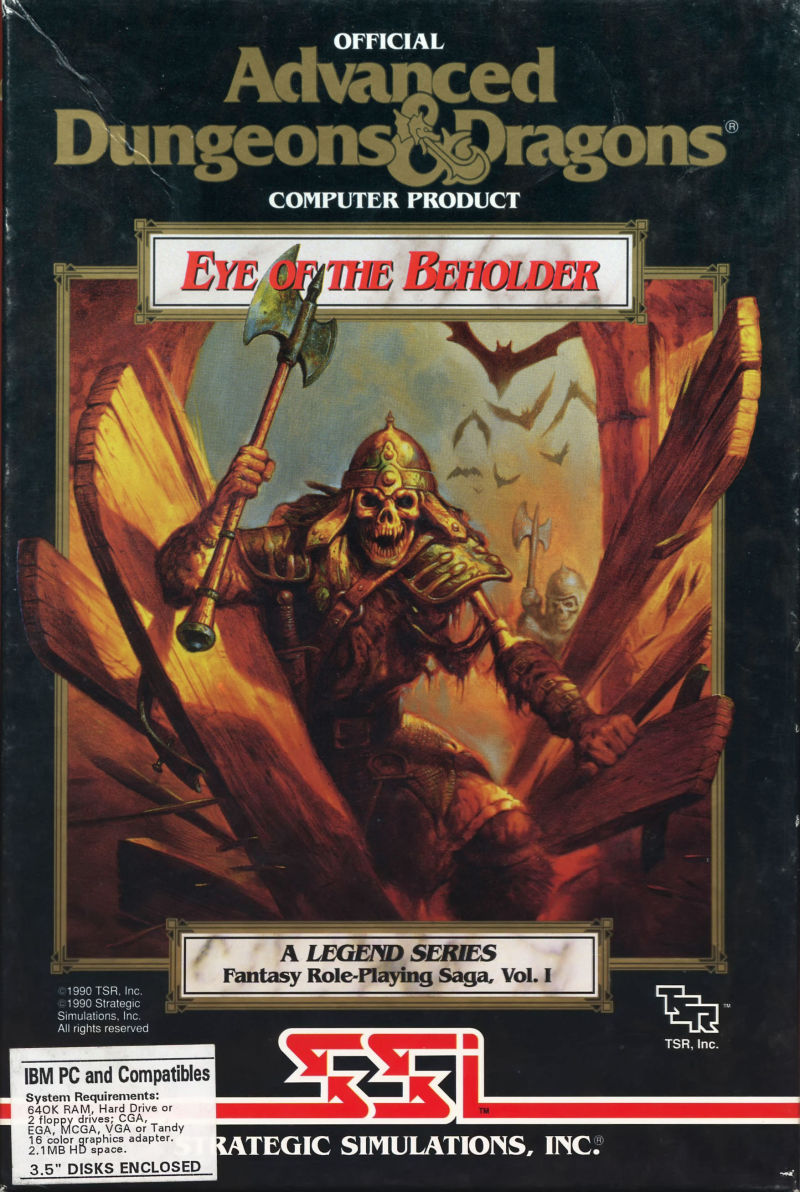
This cover art made by Jeff Easley is considered one of the most iconic covers of all time and it’s just gorgeous and action-packed. It simply features a skeleton warrior busting through a door but the level of detail is simply stunning. You can almost hear the door break just by looking at it.
Most of the covers are either like this one or variations thereof, but the American SNES cover is a bit different:
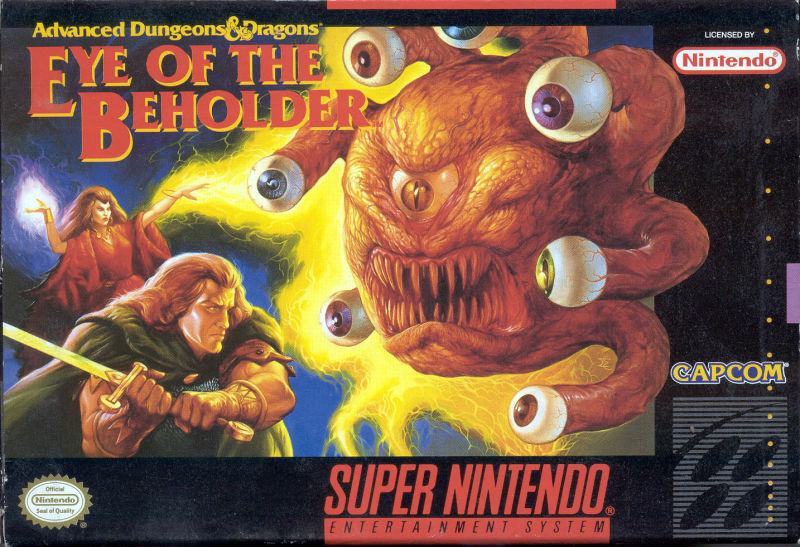
While this cover isn’t as detailed as the original one, it’s still not a bad one. As one can see, it depicts a warrior and a sorceress fighting a beholder (yes, that floating ball full of eyestalks is a beholder, one of the toughest monsters in D&D lore, which spoils the game’s story a bit).
But alas, it’s time to boot this dungeon hacker:
The game starts with some good music score for the time and then it shows a quite impressive cinematic intro. The intro features a secret council of robed individuals who decide to hire a group of adventurers to go to the sewers below the city of Waterdeep and investigate whatever is going down there, but they’re being spied on by an unseen being through a crystal ball. Then we see our group of adventurers arriving at Waterdeep and entering the sewers, which then collapse, blocking the exit.
Then we go to the character creation screen where we have to create up to 4 characters. We do this by choosing their race, class (or classes, if you’re multiclassing) and alignment, then we reroll or modify their stats to our liking and finally, we choose our characters’ appearance through a series of portraits. Although there isn’t a lot of variety of portraits to choose from, the ones that there are, aren’t bad.
If you’re not familiar with this process, then I recommend reading the manual beforehand or even the clue book to get an idea of how to form a good party. I also recommend rolling a cleric, because you’ll definitely need one.
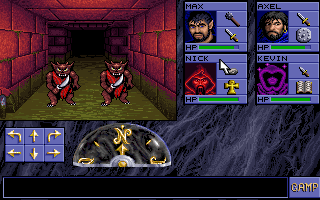
And while you start the game up to 4 characters, you have the option to add 2 more NPCs to your party. You’ll find them throughout your adventure (or what’s left of some of them). You have to remember that your party is formed by 2 columns and whoever is in the front of the party is the one that’ll fight the enemies in close-quarters combat and the ones behind can only attack using projectiles or magic (but be careful when attacked from the back or the sides).
The main screen during gameplay is composed of the main view on the left featuring a 1st-person perspective. The characters are on the right (where you can use any items or click their individual portraits to access their inventory, equipment and stats). Just below the main are the directional arrows for movement, a compass, a message screen and a Camp button on the right-bottom corner.
By clicking the Camp button, you have access to an in-game menu, where your party can rest and recover health, where any clerics and mages can memorise spells (which should be the 1st thing you do when starting a new game); scribe any scrolls for your mage to access new spells and other game options (like save and load, although the game only has one savestate).
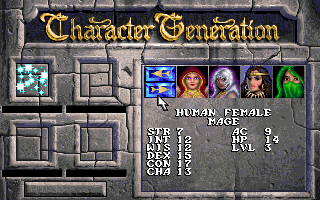
The dungeon is divided into 12 levels and each level is increasingly harder than the former with 1 or 2 monster types per level along with traps and puzzles.
Throughout your adventure, you’ll find all types of new items, like new weapons, armour, scrolls, keys, etc. Apart from the weapons, armour and food; most of the items you’ll find are usually used to solve puzzles. The game encourages exploration because you’ll never know what you’ll find behind illusionary walls, traps or locked doors. Just be mindful of any cursed item (which luckily there aren’t many).
The combat is in real-time (like in every dungeon crawler RPG) and you simply click on your weapon to attack (right-click if you’re using a mouse), although to throw spells you need to first click the spellbook or a cleric’s holy symbol, then go through a mini-menu and finally click in the desired spell, which can take a while and therefore a bit cumbersome when facing a tough opponent.
The plot also gets increasingly more complex as your adventure progresses and don’t be surprised if you need to backtrack several levels for whatever reason (luckily some ways will ease the backtracking if you know where to look). The game also has lots of secrets to find and even some easter eggs here and there, which might encourage future playthroughs (and also trying out different characters).
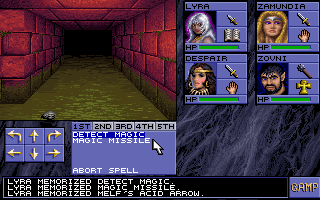
Now for the technical aspects: like I mentioned before, the game features some good music during the intro, but during a playthrough, there isn’t any music whatsoever. But even without music, the game provides a terrifying atmosphere in how it uses its simple sound effects; while exploring the dungeon, you can hear the monsters’ footsteps (or other sounds) which will get louder and louder as your party gets closer to the monsters (and then softer after killing said monsters).
Graphically wise, the game has a sound colour palette and all the monsters have a great design. Still, the animation is very limited because all the characters only have a few frames of animation. The control scheme is also pretty good and I highly recommend the use of a mouse because the gameplay was definitely built around it.
But it’s time to refer to the beholder in the room. And by that, I mean Eye of the Beholder‘s biggest controversy (only for the DOS version though). But for that, I need to issue this:
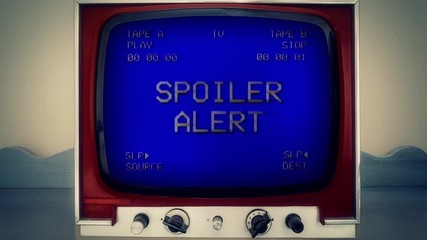
If you’ve played all the way to the end (or watched my playthrough video above), you’ll see that the end is a bit on the small side (just a text message, really). Anyone that was expecting a cinematic ending in the same vein as the intro, was extremely disappointed.
But the truth is, it’s that during development, a proper ending was actually planned but because it would take another floppy disk to fit the ending, SSI decided to just reduce the ending to a text message to save space (and money). Luckily this was only for the DOS version. All the other versions have a proper cinematic ending (which is why I recommend either playing those versions or looking it up on YouTube).
OK, the spoilers are over!
In conclusion, it’s easy to see why Eye of the Beholder is one of the titles that popularised the 1st-person dungeon-crawler subgenre (which began with Dungeon Master) and had great success among players and critics alike. With a great intro, monster design, easy character creation, good control scheme (although the spell casting could be better), solid gameplay (with some hiccups here and there) and a great atmosphere, Eye of the Beholder is a true RPG classic and although it might be a bit hard for beginners (especially the final boss), it’s still an essential title to play. Needless to say, I recommend it.
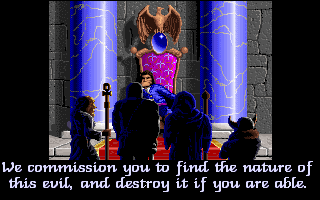
If you’re interested in trying it out, you can buy it here at GOG.com along with its 2 sequels. Or you can buy it here on Steam. I also recommend downloading the All-Seeing Eye, an automap app, which I used for my playthrough (along with the official clue book).
As far as other versions go, the Amiga version looks and plays just like the DOS version. The SNES/Super Nintendo is also very similar but since the game was designed for a mouse control scheme, it feels weird playing with a gamepad. But the Sega Mega-CD version might just be the ultimate version with new cutscenes, voice-over, an automap feature and a new soundtrack composed by Yuzo Koshiro (also responsible for the soundtracks of the Streets of Rage and Shenmue series).
In 2002, Pronto Games and Infogrames released a remake called Dungeons & Dragons: Eye of the Beholder for the Game Boy Advance. It changed the gameplay significantly by reducing the number of classes to 4 (but adding an extra race) and although the game still has a 1st-person perspective, the combat was changed to a 3rd-person perspective, similar to the D&D Gold Box series. Personally, I haven’t played this title, but it wasn’t well-received by players and critics.
But this didn’t stop fan remakes from being made:
- An AGA version with extra features,
- A module for Neverwinter Nights,
- And there’s also a port for the Commodore 64.
Whew! Talking about starting the new year with a bang! I hope you’ve enjoyed the review and I promise that 2019 will be full of great reviews like this one. Until then, keep on hacking and playing!

Your New Year’s resolution reminds me that I promised myself to finish both Ravenloft games and, as it turns out, they’re available on GOG for a reasonable price. Thanks!
Now, my problem with EotB was that I played it after completing Ishar 2. You’re sure right that Eye of the Beholder was groundbreaking for its sub-genre, but in comparison with the Silmarils’ classic, it felt just too dull, too much of a chore. Ishar had an open world to explore, many PCs to recruit, some pretty unique design choices, like simple interactions between team members or survival elements, etc. I don’t think I’ll ever return to the first part of the series, but EotB2 was much better and I think I’ll give it another try one day.
LikeLiked by 2 people
Well, you’re right that EOB is too simple, but back then dungeon crawlers were just like that. EOB started a trend that evolved with its sequel and the Ishar series.
LikeLiked by 1 person